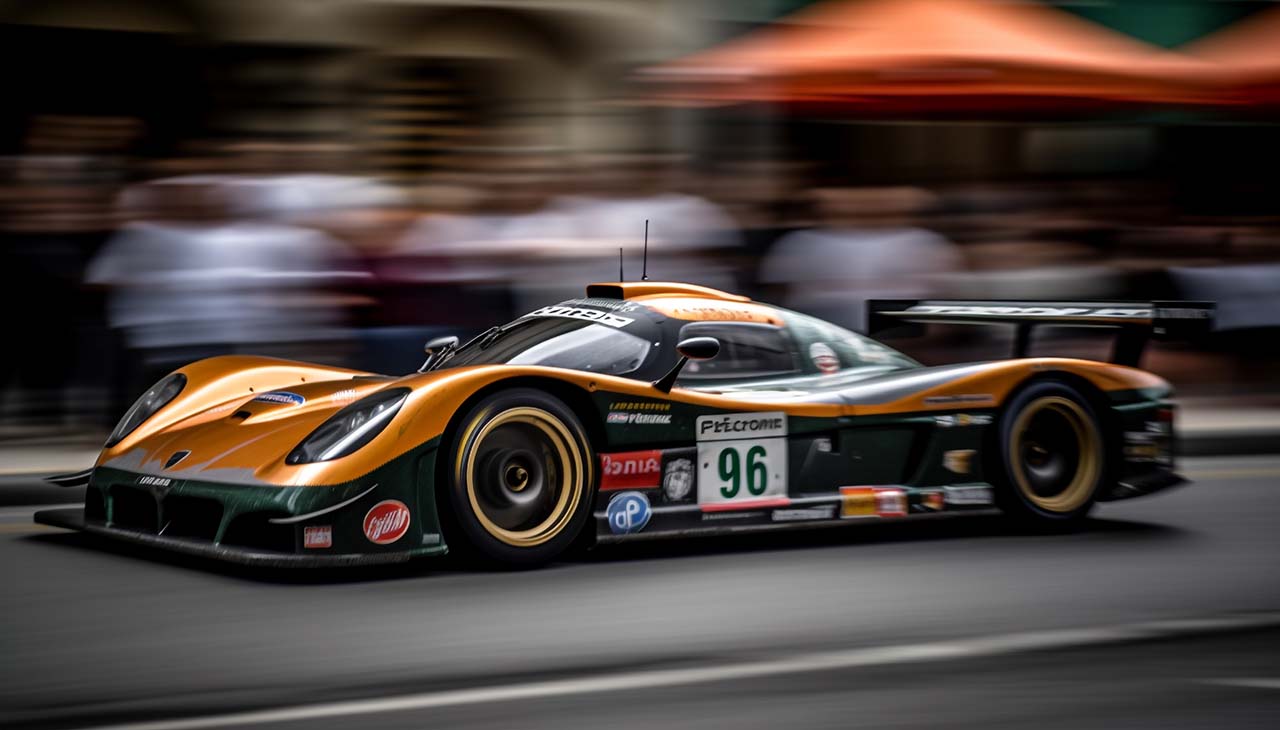A high-performance racing car is not just a vehicle; it is a testament to the boundaries of human engineering and innovation, a machine precisely designed to test the limits of speed and agility. The anatomy of these powerful machines is complex, with every component carefully engineered and strategically assembled to create the ultimate experience on the racing track. This document will delve into the intricate details of what goes into building a champion racing car, providing an in-depth look at the components that make the car a marvel of modern engineering.
Aerodynamics
Aerodynamics plays a critical role in the design and performance of a racing car. The shape and structure of the car’s bodywork must be meticulously engineered to minimize air resistance or drag and maximize downforce. The latter is essential in keeping the car ‘glued’ to the track, enhancing traction and allowing for higher speeds, especially in corners. This is achieved through the use of components like front and rear wings, diffusers, and underbody design. These elements manipulate the airflow around, under, and over the vehicle in such a way as to increase the downforce without substantially increasing the drag, thus ensuring that the car maintains the highest possible speed throughout the race.
Powertrain
The powertrain of a racing car is the heart of the beast; it propels the car forward and determines its speed, power, and efficiency. This essential component is comprised of the engine, transmission, driveshaft, differentials, and the final drive (wheels). In a high-performance racing car, the engine must be both powerful and reliable, with an optimal power-to-weight ratio. It’s often a turbocharged engine with numerous cylinders to produce maximum horsepower. The transmission, on the other hand, has to be extremely efficient in transferring the engine’s power to the wheels with minimal loss. It needs to have rapid gear changes and be able to endure the high stress of racing. Driveshafts and differentials play a crucial role in distributing power evenly between the wheels, ensuring optimal traction and control. Each part of the powertrain works in harmony to deliver the raw power and speed that make racing cars formidable machines on the track.
Suspension and Chassis
The suspension and chassis of a high-performance racing car serve as the foundation of the machine, impacting its handling, stability, and ultimately, its performance. The chassis, usually made from lightweight yet robust materials like carbon fiber, forms the structural backbone of the vehicle, designed to withstand the immense loads and stresses of high-speed racing while minimizing the car’s overall weight. Attached to the chassis are the suspension components – the system of springs, shock absorbers, and linkages that connect the vehicle to its wheels. The suspension’s critical tasks include supporting the vehicle’s weight, absorbing the impact of road irregularities, and ensuring the tires maintain contact with the road surface for optimal traction and control. In racing conditions, the suspension system needs to be highly adaptable, allowing for adjustments to suit different tracks and driving conditions. By finely tuning the suspension settings, teams can balance the car’s grip, stability, and speed, ultimately influencing its overall performance on the track.
Braking System
The braking system of a high-performance racing car is a vital component that allows the driver to control the car’s speed, bring it to a stop safely, and perform high-speed maneuvers without losing control. It comprises several key elements, such as brake rotors, brake pads, calipers, and brake fluid. The rotors or discs are usually made of carbon-ceramic or other high-performance materials to withstand extreme heat and stress. The calipers apply pressure to the brake pads, which then create friction against the rotors, slowing down or stopping the car. The brake fluid plays a crucial role in transferring the force from the brake pedal to the brakes themselves. A racing car’s braking system must be engineered for high performance, and capable of delivering consistent and reliable braking power even under harsh racing conditions. It also needs to have excellent heat dissipation properties to prevent brake fade, which could greatly compromise the car’s performance and safety. Proper maintenance and regular inspection of the braking system are also paramount to ensure optimum performance throughout the race.
Safety Features
The safety features of a high-performance racing car are as integral to its design as speed and performance. These cars are equipped with a host of technologies and systems designed to protect the driver in the event of an accident. The key safety features include the roll cage, a strong frame built into the cabin to protect the driver from impacts and prevent the car from crumpling in a crash. The driver’s seat is specially designed to absorb shock and shield the driver from impact forces. Racing cars also feature advanced restraint systems, including six-point harness seatbelts and a HANS (Head And Neck Support) device that prevents whiplash injuries. Fire suppression systems are also standard, designed to extinguish fires quickly in the event of a crash or mechanical failure. Additionally, race cars are also equipped with an emergency cut-off switch to shut down the car’s electrical system and fuel pumps in case of an accident, to mitigate the risk of fire. Safety features are constantly evolving with ongoing advancements in technology and engineering, underscoring racing’s commitment to driver safety.
Electronics and Data Acquisition
The electronics and data acquisition system of a high-performance racing car plays a critical role in managing the car’s performance and gathering valuable data for strategy formation. This system encompasses a wide array of sensors and control units that monitor everything from engine performance and tire pressure to driver inputs and environmental conditions. The Electronic Control Unit (ECU) is the system’s nerve center, managing the car’s electronic systems and adjusting parameters in real-time for optimal performance. Telemetry is also a crucial component, transmitting real-time data from the car to the team’s engineers who scrutinize this information to make strategic decisions during the race. Furthermore, onboard cameras and GPS systems provide valuable visual and positional data. The data acquisition system is indispensable in modern racing, offering insights to improve the car’s performance, anticipate potential issues, and strategize for upcoming races. It represents the convergence of automotive engineering and information technology, underscoring the increasingly technical nature of high-performance racing.



